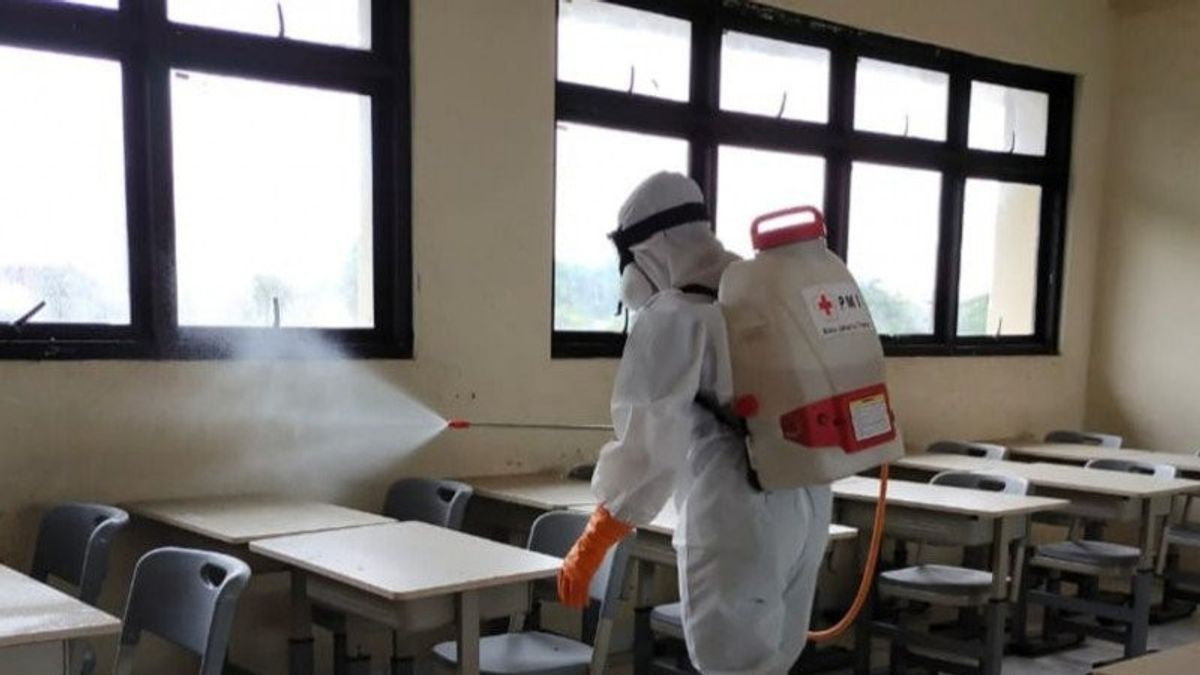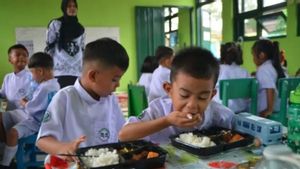JAKARTA - DKI Jakarta starting Friday, February 4, 2022, has finally implemented 50 percent face-to-face learning (PTM). However, the head of the DKI Jakarta Education Agency, Nahdiana, revealed that the implementation is only limited to four hours per day.
"This is a step to minimize PTM activities and follow all instructions from the central government and the COVID-19 Task Force," said Nahdiana in a press release to reporters, Friday, February 4, 2022.
In addition to coordinating with the COVID-19 Task Force, the DKI Jakarta Disdik also carries out active case finding (ACF) in collaboration with the relevant Regional Apparatus Organizations (OPD). This is done in order to strictly monitor limited PTM through PCR swabs of school residents.

Previously, DKI Jakarta Governor Anies Baswedan offered a proposal to the Java-Bali PPKM Coordinator Luhut Binsar Pandjaitan to stop Jakarta PTM for the next one month.
Face-to-face learning (PTM), although limited, is considered to be the best solution for learning recovery, especially for students who have difficulties with the online learning system and also for students who do not yet have independent learning. However, in the midst of the current increasing number of COVID-19 cases, including due to the Omicron variant virus, school closures are unavoidable.
Distance learning is an option to maintain the continuity of education. It is true that distance learning for about two years has been ineffective due to various obstacles that have caused a number of problems, ranging from learning losses to psychosocial impacts for children. Parents also need support, because not all parents are ready for their children to study at home.
A number of studies have shown that schools opening in the midst of high COVID-19 cases in the community will trigger the emergence of cases, even COVID-19 clusters in schools. If this is the case, the impact will further accelerate the transmission of COVID-19 cases in the community.

Thus the cycle continues. With these conditions, plus the emergence of new virus variants like today, it is necessary to find other ways to restore learning, while prioritizing student safety.
The government estimates that the peak of Omicron will occur at the end of February 2022 with a prediction of a spike of up to three times the peak of the Delta variant (Ministry of Health, January 31, 2022). This prediction is a warning for education stakeholders to take wiser anticipatory steps for safe learning for students.
In the future, opening and closing schools will become a common thing as long as this pandemic has not been resolved. Procedures and mechanisms for opening or closing schools due to COVID-19 cases need to be made more flexible by considering COVID-19 cases in the community. The safety and security of students is a major consideration.
The English, Chinese, Japanese, Arabic, and French versions are automatically generated by the AI. So there may still be inaccuracies in translating, please always see Indonesian as our main language. (system supported by DigitalSiber.id)










